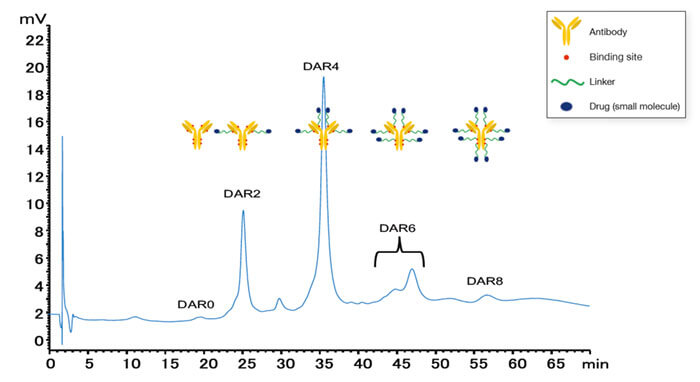Introduction
Antibody-Drug Conjugates (ADCs) are a recent development of an important class of highly potent biopharmaceutical drugs designed as a targeted therapy for the treatment of people with cancer. ADCs are monoclonal antibodies chemically linked to biologically active small molecule drugs. By combining powerful cell-killing abilities of potent agents with target- specific antibodies, ADCs deliver cytotoxic drugs to the diseased cells, while limiting the toxicity in the non-targeted ones. A significant attribute of ADCs is the average number of drugs conjugated to the antibodies, the drug-to-antibody ratio (DAR). The DAR value affects the efficiency of the drug, as low drug loading reduces the potency, while high drug loading can negatively affect pharmacokinetics and toxicity.
As an example for ADCs, the unmodified cysteine-conjugated ADC mimic and its DAR with DAR values ranging from 2 to 8 is well resolved on the BioPro BF column (see fig. 1).
 Fig. 1: Separation of antibody conjugates with different drug-to-antibody ratio (DAR) using BioPro HIC BF.
Fig. 1: Separation of antibody conjugates with different drug-to-antibody ratio (DAR) using BioPro HIC BF.




